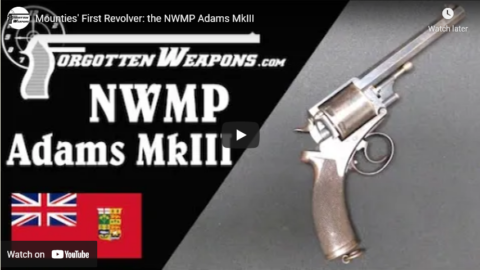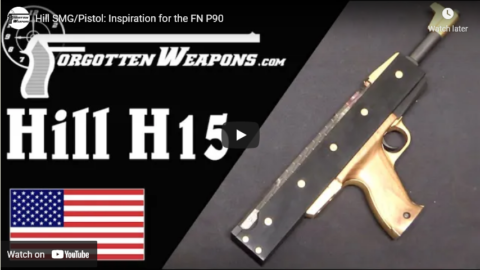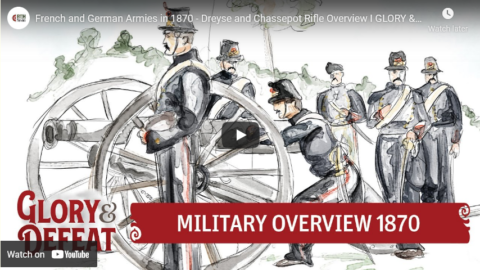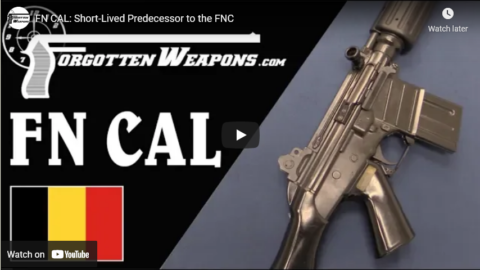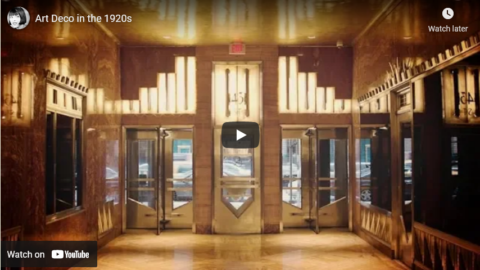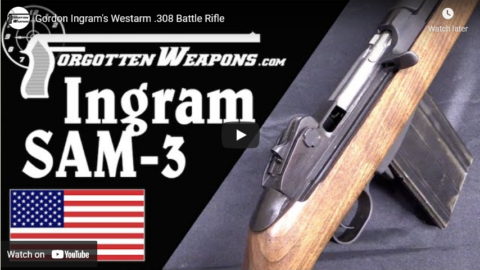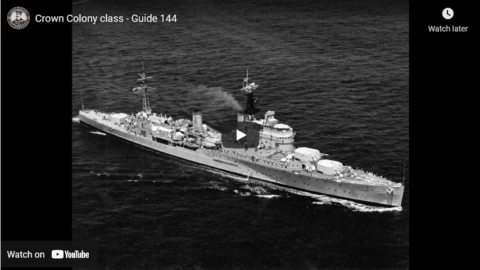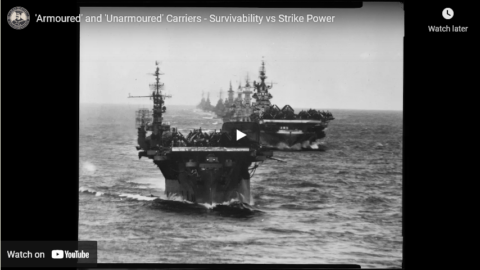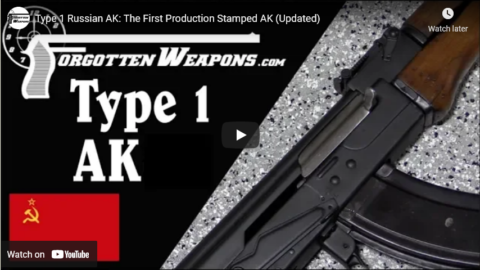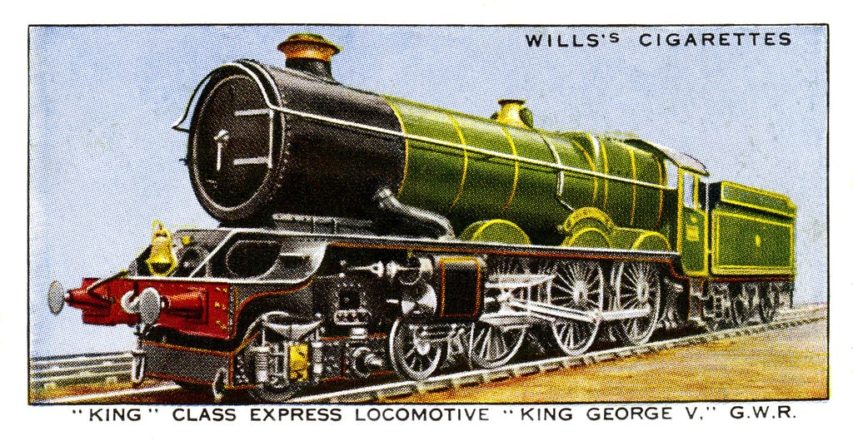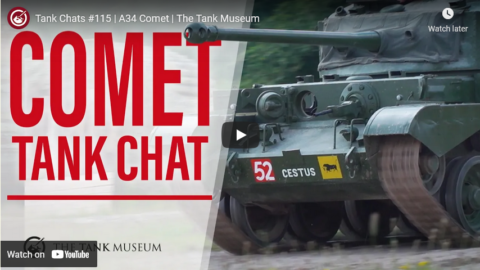Forgotten Weapons
Published 3 May 2021http://www.patreon.com/ForgottenWeapons
https://www.floatplane.com/channel/Fo…
Cool Forgotten Weapons merch! http://shop.forgottenweapons.com
The first handguns issued by the North West Mounted Police (which would later become the modern RCMP) were 330 Adams revolvers, requisitioned by the new police service in March 1874, and shipped over from England. Upon their receipt in July of that year, the Mounties were dismayed to find thoroughly worn out Adams Mk I 5-shot conversions from old percussion revolvers. These were found totally unfit for frontier service, and an appeal was sent back to England for something better.
A replacement shipment arrived in October 1875, and this time they received 326 much better Adams MkIII revolvers (330 were shipped, but 4 were stolen in transit). The MkIII pattern was a purpose-made .450 Adams cartridge revolver, holding six shots with a double action trigger and solid frame. These served very well, and the NWMP ordered more in 1880 — for which they instead received Enfield revolvers, which had replaced the Adams in British military service by that time.
The 326 Adams MkIII revolvers issued by the NWMP were marked by a local gunsmith upon their arrival. The right side of the frames are marked “C M.P.” (presumably Canada Mounted Police) and given a police inventory number just below the barrel (in addition to the serial number above the trigger). These issue numbers were defaced when the guns were sold out of service.
Contact:
Forgotten Weapons
6281 N. Oracle Box 36270
Tucson, AZ 85740
August 22, 2021
Mounties’ First Revolver: the NWMP Adams MkIII
August 19, 2021
Hill SMG/Pistol: Inspiration for the FN P90
Forgotten Weapons
Published 28 Apr 2021http://www.patreon.com/ForgottenWeapons
https://www.floatplane.com/channel/Fo…
Cool Forgotten Weapons merch! http://shop.forgottenweapons.com
John L. Hill was a World War One fighter pilot [in the short-lived Canadian Air Force] who went into the oil and gas industry, and enjoyed tinkering with guns in his free time. In 1949 he got an idea for a new style of magazine and feed system, which he developed and patented in the early 1950s. Hill’s intention was to create a submachine gun for the military or police that held its magazine flat atop the action, instead of sticking out of the gun where it would get in the way. To do this, Hill designed the system that would be later used in the FN P90, with ammunition held perpendicular to the barrel, and a turret mechanism in the action to turn the cartridges 90 degrees for feeding in the chamber.
Hill built seven or eight fully automatic prototypes, which were examined by the US Army and the FBI. One was tested at Aberdeen Proving Grounds in 1953, and we still have some of the photos from that examination (that particular gun was built using an MP40 barrel, interestingly). Hill’s guns varied in pretty much all details, including different barrel lengths, stock configurations, and magazines. Some used single-stack and some double-stack magazines, but all were a simple blowback action.
At some point in the late 50s or early 60s, Hill sold his patent rights to a pair of Texas businessmen who built 90 or 100 more examples (mostly semiautomatic) under the name H&B Enterprises. They took one to FN in Belgium, who found it interesting but did not opt to license or produce it. Ultimately, nobody was interested enough to put the gun into production, and only a small number of the H&B guns survive today. The original Hill prototypes were donated to the Lone Star Flight Museum in Texas in 1993, although it is not clear where they are today.
When FN began to design the P90 in the early 1980s, Hill’s concept made a return. It is not known exactly how much direct link there was between the Hill prototype and the P90 concept, but the eventual patents filed on the P90 do reference Hill’s patents (among others). The P90 remains the only production firearm to use this clever rotary feeding system.
Hill’s patents:
https://patents.google.com/patent/US2…
https://patents.google.com/patent/US2…
https://patents.google.com/patent/US2…For more documents, see the Forgotten Weapons page on this design:
https://www.forgottenweapons.com/hill…Contact:
Forgotten Weapons
6281 N. Oracle 36270
Tucson, AZ 85740
August 18, 2021
Tank Chats #120 | Sd.Kfz. 234 Panzerspähwagen | The Tank Museum
The Tank Museum
Published 26 Mar 2021The Tank Museum’s Curator David Willey presents a Tank Chat on the Sd.Kfz. 234 Panzerspähwagen, a heavy German reconnaissance vehicle from the Second World War, and the only wheeled German armour in The Tank Museum collection. Join David as he tells you more.
Support the work of The Tank Museum on Patreon: ► https://www.patreon.com/tankmuseum
Visit The Tank Museum SHOP & become a Friend: ►tankmuseumshop.orgTwitter: ► https://twitter.com/TankMuseum
Instagram: ► https://www.instagram.com/tankmuseum/
#tankmuseum #tanks
August 16, 2021
French and German Armies in 1870 – Dreyse and Chassepot Rifle Overview I GLORY & DEFEAT Week 3
realtimehistory
Published 29 Jul 2021Sign up for Curiosity Stream and get Nebula bundled in and SAVE 26%: https://curiositystream.com/realtimeh…
While the French and different German Armies are gathering we are taking the time this week to take a look at military organization and warfare in 1870. As a special guest we also have Cap And Ball on the show who introduces the famous Chassepot and Dreyse rifles which will be important in this conflict.
» THANK YOU TO OUR CO-PRODUCERS
John Ozment
James Darcangelo
Jacob Carter Landt
Thomas Brendan» OUR PODCAST
https://realtimehistory.net/podcast – interviews with historians and background info for the show.» LITERATURE
Arand, Tobias: 1870/71. Die Geschichte des Deutsch-Französischen Krieges erzählt in Einzelschicksalen. Hamburg 2018
Delpérier, Louis; Mirouze, Laurent: Der Deutsch-Französische Krieg 1870/71. Bd. 2. Uniformierung und Ausrüstung der französischen Armeen. Wien 2020
Herre, Franz: Kaiser Wilhelm I. Der letzte Preuße. Köln 1980
Milza, Pierre: L’année terrible. La guerre franco-prussienne. Septembre 1870 – mars 1871. Paris 2009
Stein, Markus; Bauer, Gerhard: Der Deutsch-Französische Krieg 1870/71. Bd. 1. Uniformierung und Ausrüstung der deutschen Armeen. Wien 2020» SOURCES
Fontane, Theodor: Der Krieg gegen Frankreich. Bd. 1. Berlin 1873
Kriegsgeschichtliche Abtheilung des Großen Generalstabs (Hg.): Der deutsch-französische Krieg 1870/71. Erster Theil. Erster Band. Berlin 1874
Pflugk-Harttung, Julius: Krieg und Sieg 1870-1871. Bd. 2 Berlin 1896» OUR STORE
Website: https://realtimehistory.net»CREDITS
Presented by: Jesse Alexander
Written by: Cathérine Pfauth, Prof. Dr. Tobias Arand, Jesse Alexander
Director: Toni Steller & Florian Wittig
Director of Photography: Toni Steller
Sound: Above Zero
Editing: Toni Steller
Motion Design: Philipp Appelt
Mixing, Mastering & Sound Design: http://above-zero.com
Maps: Battlefield Design
Research by: Cathérine Pfauth, Prof. Dr. Tobias Arand
Fact checking: Cathérine Pfauth, Prof. Dr. Tobias ArandChannel Design: Battlefield Design
Contains licensed material by getty images
All rights reserved – Real Time History GmbH 2021
August 15, 2021
Denel NTW 20: A Multi-Caliber Anti-Materiel Rifle
Forgotten Weapons
Published 7 Sep 2018http://www.patreon.com/ForgottenWeapons
Cool Forgotten Weapons merch! http://shop.bbtv.com/collections/forg…
Created by noted South African gun designer Tony Neophytou, the NTW-20 is a bolt action anti-materiel rifle made in 20x82mm, 20x110mm, and 14.5x115mm. The weapon began as idea to use the large quantities of surplus 14.5mm ammunition available at the time, and a recognition that the 14.5mm Soviet cartridge was an excellent anti-armor round, with a really remarkably high muzzle velocity. To widen the rifle’s capabilities, it was decided to incorporate an easily interchangeable barrel, and also chamber it for the 20x82mm round used in the Inkunzi PAW individual weapon and Inkunzi Strike machine gun. The 20x82mm is low velocity compared to traditional 20mm cartridges, carrying the same explosive or incendiary payload but without the punishing recoil of what was originally an aircraft cannon cartridge.
Both of these cartridges are fed from a 3-round box magazine on the left side of the action. A single-shot version in the longer 20x110mm cartridge was also developed by request of a military client, but this cartridge is too long to fit the magazine. A version in .50 BMG was considered, but decided against on the basis of the 14.5mm being just as available and substantially more effective.
The gun is liberally sprinkled with clever engineering and design features — things like using the recoil-absorbing travel of the action to recock the hammer, and the use of both 20mm and 14.5mm cartridge cases as levers for unlocking the barrel. The optic was custom made for the rifle, an 8x56mm long eye relief scope to prevent any chance of the scope bell injuring the shooter during recoil. The trigger mechanism uses only a single spring, and is easily removed from the action. The bolt handle itself is on a pivot pin, and provides the primary extraction leverage to ensure easy cycling with the high-pressure 14.5mm cartridge.
From a military perspective, the NTW-20 is easily broken apart into barrel and action loads, and can be transported more easily than any comparable weapon by a two-man team. The use of a recoil buffer in the action and an effective muzzle brake makes it a remarkably pleasant 20mm rifle to fire. Of all the anti-material rifles I have fired (Lahti L39, Solothurn S18-1000, Mauser T-Gewehr), the NTW-20 was by far the most comfortable to shoot. It was also the only one in which I jumped at the chance to fire more rounds once the filming needs were met. It certainly has a kick, but not at all a painful one.
Many thanks to Denel Land Systems for allowing me to try out this very cool rifle!
If you enjoy Forgotten Weapons, check out its sister channel, InRangeTV! http://www.youtube.com/InRangeTVShow
August 12, 2021
FN CAL: Short-Lived Predecessor to the FNC
Forgotten Weapons
Published 4 Jan 2019http://www.patreon.com/ForgottenWeapons
Cool Forgotten Weapons merch! http://shop.bbtv.com/collections/forg…
The CAL (Carabine Automatique Leger; Light Automatic Carbine) was FN’s first attempt to produce a 5.56mm rifle as a counterpart to the 7.62mm FAL. While light and handy, the CAL was a relatively complex and expensive design, and failed to garner many sales. About 12,000 were made in total before FN pulled the gun in favor of the FN FNC, which would prove to be much more successful.
Contact:
Forgotten Weapons
PO Box 87647
Tucson, AZ 85754
August 10, 2021
Art Deco in the 1920s
The1920sChannel
Published 1 Nov 2019The aesthetic of the 1920s was certainly unique and instantly recognizable. For those of us (me included) who don’t know much about art, it’s difficult to pinpoint the characteristics. The most important art movement of the ’20 was Art Deco. So here’s a closer, though unprofessional, look at 1920s aesthetic.
August 5, 2021
Gordon Ingram’s Westarm .308 Battle Rifle
Forgotten Weapons
Published 2 Apr 2021http://www.patreon.com/ForgottenWeapons
https://www.floatplane.com/channel/Fo…
Cool Forgotten Weapons merch! http://shop.bbtv.com/collections/forg…
In the late 1970s and early 80s, Gordon Ingram came close to producing a military rifle in one of the most convoluted international arrangements I’ve yet heard of. Prototypes were made in Italy using British raw castings, to be tested in Somalia as part of a project to build a rifle factory there with Dominican Republic expertise from the San Cristobal armory. Somalia actually ordered a large quantity of rifles in 7.62x39mm, but Ingram prototyped the design in .223 and .308 as well.
Mechanically, the rifle was essentially a scaled-up M1 Carbine with a long stroke gas piston instead of a gas tappet. The production guns were select-fire, but the handful or prototypes brought into the US were semi-automatic only, to meet import requirements. In .308, the rifle used FAL magazines, while the .223 ones used AR magazines and the 7.62x39mm ones AK magazines.
Unfortunately for Ingram (but predictably), the project fell apart as the result of financial corruption among the many interested parties. The Somali government ended up paying out something like $5 million US and all they got for it were 10 unreliable prototype rifles.
Contact:
Forgotten Weapons
6281 N. Oracle 36270
Tucson, AZ 85740
August 1, 2021
Crown Colony class – Guide 144
Drachinifel
Published 28 Sep 2019The Crown Colony class cruisers of the Royal Navy, and many others, are today’s subject.
Want to support the channel? – https://www.patreon.com/Drachinifel
Want a shirt/mug/hoodie – https://shop.spreadshirt.com/drachini…
Want a medal? – https://www.etsy.com/uk/shop/Drachinifel
Want to talk about ships? https://discord.gg/TYu88mt
Want to get some books? www.amazon.co.uk/shop/drachinifel
Drydock Episodes in podcast format – https://soundcloud.com/user-21912004
July 28, 2021
Tank Chats #117 | Stridsvagn 103 | The Tank Museum
The Tank Museum
Published 5 Feb 2021Curator David Willey discusses the Cold War era Swedish Stridsvagn 103, also known as the ‘S-Tank’. Developed in the 1950s, the S-Tank was the first production tank to be powered by a turbine engine and it was also the only mass produced tank since the Second World War to not have a turret. A truly unconventional tank.
Support the work of The Tank Museum on Patreon: ► https://www.patreon.com/tankmuseum
Visit The Tank Museum SHOP & become a Friend: ► tankmuseumshop.orgTwitter: ► https://twitter.com/TankMuseum
Instagram: ► https://www.instagram.com/tankmuseum/
#tankmuseum #tanks
July 25, 2021
Russian Type 2 AK: Introducing the Milled Receiver
Forgotten Weapons
Published 8 Jul 2018http://www.patreon.com/ForgottenWeapons
Cool Forgotten Weapons merch! http://shop.bbtv.com/collections/forg…
Updated to fix errors in nomenclature and production dates.
With recognition of the production problems of the original Type 1 AK, an alternative was needed. Russian engineer Valeriy Kharkov led a team of engineers who designed a replacement drop-forged and machined receiver for the AK. This new receiver was not a technical challenge for Izhevsk to produce, and it added durability and potentially accuracy to the weapon, at the cost of an additional pound (half kilo) of weight and more manufacturing time/expense.
The Type 2 AK is distinctive for its rear socket used to attach the buttstock, which was done to simplify the receiver profile and to allow the same receiver to be used for both fixed and underfolding stocks. The Type 2 receiver also has a weight reduction scalloped cut on the right side which is parallel to the top surface of the receiver (on the later Type 3, this cut would be made parallel to the bottom of the receiver instead) as well as a few other smaller features.
While the Type 2 receiver solved the immediate problem for Kalashnikov’s team, it would only be in production for a short time. Introduced in 1951, production ceased in 1957, being replaced by an improved iteration of milled receiver, the Type 3, in 1955. The Type 3 would remain in production until the stamped receiver was finally perfected as the AKM in 1959, and the Type 3 would be produced by a significant number of nations outside the Soviet Union.
Today, the second pattern AK is an very rare weapon, and I am grateful to the private collector who allowed me to video this one for you!
If you enjoy Forgotten Weapons, check out its sister channel, InRangeTV! http://www.youtube.com/InRangeTVShow
Contact:
Forgotten Weapons
6281 N Oracle #36270
Tucson, AZ 85704
July 23, 2021
‘Armoured’ and ‘Unarmoured’ Carriers – Survivability vs Strike Power
Drachinifel
Published 2 Jan 2019In which we try to unpick the somewhat thorny issue of armoured vs unarmoured flight decks in WW2 carrier design.
Want to support the channel? – https://www.patreon.com/Drachinifel
Want to talk about ships? https://discord.gg/TYu88mt
July 22, 2021
Type 1 Russian AK: The First Production Stamped AK (Updated)
Forgotten Weapons
Published 8 Jul 2018http://www.patreon.com/ForgottenWeapons
Cool Forgotten Weapons merch! http://shop.bbtv.com/collections/forg…
Updated to fix errors of nomenclature and production dates.
The AK was formally adopted in 1947, and went into production in 1948. In this very first form, it used a stamped receiver with front and rear trunnions riveted in place. Unfortunately, while the hand-fitted preproduction guns were quite excellent, the manufacturing processes and quality control left a lot to be desired. The stamped receiver was relatively thin (especially compared to previous stamped Russian small arms like the PPS-43), and was very susceptible to warping during heat treating and other parts of the manufacturing process. The guns that met QC requirements were every bit as good as expected, but the high number of rejects nullified much of the point of having those stamped parts in the first place.
For this reason, Type 1 AK production ended in 1951, and a milled receiver was developed to allow rifles to continue being made while the engineering and production team worked to improve the receiver design and the manufacturing processes around it.
It should be noted that the “AK-47” was the final prototype version of the gun, and the Type 1 was designated simply “AK” in official Soviet documentation.
Today, the first pattern AK47 is an extremely rare weapon, and I am grateful to the private collector who allowed me to video this one for you!
If you enjoy Forgotten Weapons, check out its sister channel, InRangeTV! http://www.youtube.com/InRangeTVShow
Contact:
Forgotten Weapons
6281 N Oracle #36270
Tucson, AZ 85704
July 17, 2021
The Great Western Railway before nationalization (and back again)
In The Critic, Jonathan Glancey sings the praises of the steam locomotive designs and liveries of the pre-nationalization Great Western Railway:
The greatest of all Great Western Railway locomotives were the King Class 4-6-0s. From 1927, and for more than 30 years, they headed principal express trains from Paddington to Bristol, Plymouth, South Wales and the West Midlands with power, precision and truly regal style.
In a livery of lined dark green with copper-capped chimneys, brass safety valve covers, and names emblazoned above their driving wheels, the Kings led long chocolate and cream-coloured trains through landscapes they enhanced in days of both private and public ownership. Together with their less powerful shed-mates — Castles, Halls, Granges and Manors — these puissant machines breathed “Great Western” with every beat of their crisp exhausts.
In the beginning, the Kings were to have been Cathedrals, an appropriate name for locomotives representing a concern that, incorporated in 1835 and engineered by Isambard Kingdom Brunel, was revered by many employees, passengers and most enthusiasts as something more akin to a religion than a mere railway. Its engineering was progressive, and yet its corporate identity (what today’s marketing jargoneers would call its “brand”) retained a gloriously ecclesiastical and slightly old-fashioned air throughout the railway’s life.
Sir William Stanier, a Great Western engineer who moved from Swindon to the LMS at Crewe and then to the chairmanship of Power Jets in the Second World War, was asked by Cuthbert Hamilton Ellis, a writer on railways, “whether there was some nameless cabal at Swindon which ruled the styling of a Great Western locomotive” from the latest 1940s designs back through the Edwardian Saints and Stars to engines of the 1880s designed by William Dean. Stanier smiled and exclaimed: “Dean? Gooch! [the GWR’s first locomotive engineer]. It was traditional.”
The tradition lives on. In 2015, today’s Great Western Railway — an operation owned by the multi-national FirstGroup — adopted a handsome dark green livery, created by the design agency Pentagram, that reaches back to the Kings and, by association, all the way to Gooch and Brunel.
The new look was sung as if from the Great Western’s “Ancient and Modern” hymn book of design. In a privatised railway world of largely gimcrack style and branding, with all too many trains looking as if their design inspiration has been that of sports shoes or the packaging of sweets such as Refreshers, the Great Western re-introduced gravitas, continuity and regional sensibility to the way its trains looked.
This is something those in charge of the newly announced Great British Railways (GBR) should think about carefully as this new public body takes over the national railway infrastructure in 2023, its remit including corporate identity. While its name is, perhaps, rather too close to Little Britain’s Great British Air, the possibility of it exercising a civilising influence over the design of our trains is there. A national design standard and identity could yet be created that speak of the unity of the British railway network and its diversity in the same breath.
July 14, 2021
Tank Chats #115 | A34 Comet | The Tank Museum
The Tank Museum
Published 8 Jan 2021Join The Tank Museum’s Historian David Fletcher has he discusses the A34 Comet, widely regarded as the best tank Britain produced during the Second World War.
Support the work of The Tank Museum on Patreon: ► https://www.patreon.com/tankmuseum
Visit The Tank Museum SHOP & become a Friend: ► tankmuseumshop.orgTwitter: ► https://twitter.com/TankMuseum
Instagram: ► https://www.instagram.com/tankmuseum/
#tankmuseum #tanks

